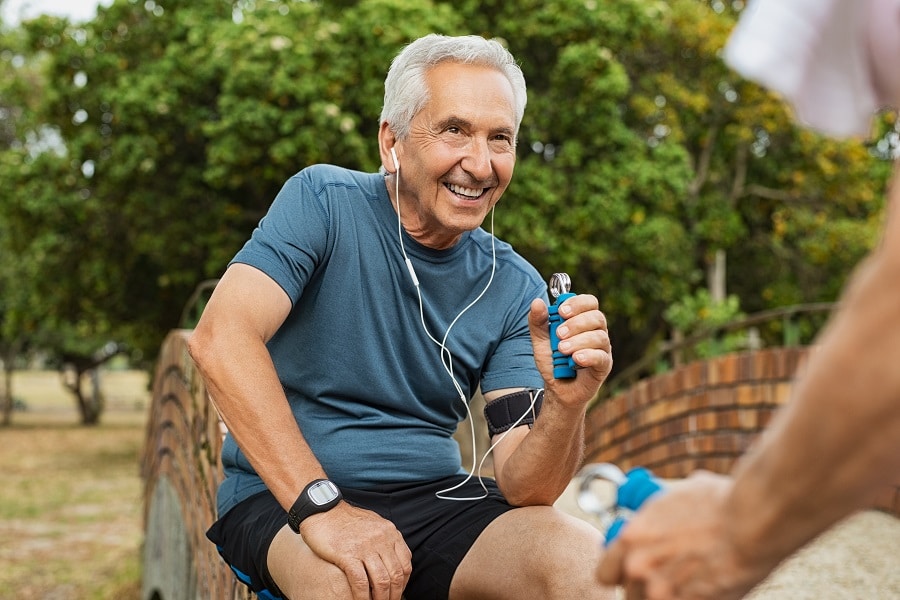The gluteal muscles, commonly called the “glutes,” play a pivotal role in our physical aesthetics and overall health. These muscles, comprising the gluteus maximus, medius, and minimus, are responsible for a range of movements and provide stability to our posture. A strong and well-defined set of glutes is often sought after, not just for its visual appeal but also for its contribution to athletic performance and injury prevention. This guide delves into the anatomy, benefits, and various exercises tailored for all levels to help readers achieve their booty goals.
Contents
Anatomy Of The Glutes

The gluteal region houses three primary muscles: the maximus, medius, and minimus. The gluteus maximus, the largest of the trio, is responsible for hip extension and outward rotation. It’s the muscle that gives the buttocks its characteristic shape. The gluteus medius and minimus, situated beneath the Maximus, play crucial roles in hip abduction and stabilizing the pelvis, especially during one-legged activities like walking or running.
Understanding the anatomy of the glutes is essential for targeted training. By knowing which muscle performs what function, one can tailor their exercise regimen to address specific weaknesses or to achieve desired aesthetics. For instance, those looking to lift and round their buttocks might focus on exercises that engage the gluteus medius and minimus.
Benefits Of Strong Glutes

Strong glutes offer more than just aesthetic appeal; they are the cornerstone of a healthy, functional body. One of the primary benefits of robust glutes is the prevention of lower back pain. As the glutes are responsible for maintaining proper pelvic alignment, weak or imbalanced glutes can lead to poor posture and strain on the lower back.
Additionally, the glutes play a significant role in athletic performance. From sprinting to jumping, these muscles provide the explosive power needed in many sports. Athletes with strong glutes often find they can run faster, jump higher, and change direction more quickly. Moreover, well-developed glutes can reduce the risk of knee and ankle injuries by ensuring proper leg alignment during movement.
Warm-Up: Preparing For Your Workout

Before diving into any exercise routine, especially one targeting the glutes, it’s imperative to warm up. A proper warm-up increases blood flow to the muscles, prepares the joints for movement, and reduces the risk of injury. Dynamic stretches, such as leg swings and high knees, can help activate the glutes and prepare them for more intense exercises.
Activation exercises are another crucial component of the warm-up routine. These exercises, like clamshells and fire hydrants, specifically target the gluteal muscles, ensuring they are engaged and ready to work during the main workout. Incorporating dynamic stretches and activation exercises can ensure a productive and safe workout session, maximizing gains and minimizing injury risks.
Beginner Booty Busting Exercises

Embarking on a journey to strengthen the glutes begins with mastering the basics. For beginners, bodyweight exercises offer an excellent starting point. The glute bridge, for instance, is a foundational move that targets the gluteus maximus. Lying on one’s back with feet flat on the ground and knees bent, lifting the hips towards the ceiling activates the glutes. Holding at the top momentarily and then lowering back down completes the movement.
Step-ups are another beginner-friendly exercise that engages the glutes. Using a bench or a sturdy platform, one places a foot on the elevated surface and pushes through the heel to step up. The key is to ensure the glutes are doing the work, not just the quads. Alternating legs and maintaining a controlled pace can maximize the benefits of this exercise.
Intermediate Booty Busting Exercises

As one progresses in their glute training journey, it’s essential to introduce more challenging exercises. The Bulgarian split squat is a fantastic intermediate move that targets the glutes and challenges balance and stability. With one foot elevated behind on a bench and the other foot forward, one lowers into a lunge position, ensuring the knee doesn’t go past the toes.
Hip thrusts, another intermediate exercise, are a step up from the glute bridge. Using a bench and optionally a weight placed on the lap, one thrusts their hips upwards, squeezing the glutes at the top. This exercise is particularly effective for targeting the gluteus maximus and can be modified with different weights or single-leg variations.
Advanced Booty Busting Exercises

Advanced exercises offer increased intensity and complexity for those looking to take their glute training to the next level. The pistol squat, a one-legged squat, requires strength, balance, and flexibility. Starting standing, one extends a leg forward and squats down on the other leg, aiming to go as low as possible.
Barbell glute bridges introduce weights into the foundational glute bridge exercise. With a barbell placed across the hips and the back resting on a bench, one lifts the hips, pressing the weight upwards. This exercise allows for progressive overload, meaning one can continually increase the weight as one’s strength improves, ensuring continuous glute development.
Incorporating Cardio for Glute Growth

While strength training is paramount for glute growth, incorporating cardio can aid in fat loss, revealing more defined muscles. Hill sprints, where one sprints up a hill and walks or jogs down, are particularly effective for glute activation. The incline forces the glutes to work harder, benefiting cardiovascular and strength.
Stair climbing is another cardio exercise that heavily engages the glutes. Whether using a stair machine at the gym or finding a set of outdoor stairs, the upward motion targets the gluteal muscles, especially when taking two steps at a time. Balancing these cardio exercises with strength training ensures a well-rounded approach to booty development.
Recovery and Nutrition

Muscle growth doesn’t just happen during workouts; recovery is equally crucial. After putting the glutes through intense exercises, allowing them time to repair and grow is essential. Stretching after a workout can help alleviate muscle tightness, with moves like the pigeon pose specifically targeting the glutes. Foam rolling, another recovery tool, can help release muscle knots and improve flexibility.
Nutrition plays a pivotal role in muscle development. Protein, in particular, is essential for muscle repair and growth. Incorporating lean protein sources like chicken, fish, and legumes can aid glute development. Staying hydrated and consuming healthy fats and complex carbohydrates can support overall health and muscle growth.
The Bottom Line
The journey to strong, well-defined glutes is multifaceted, encompassing understanding anatomy, mastering exercises, incorporating cardio, and prioritizing recovery and nutrition. While the path may seem daunting, the benefits of robust glutes—from improved athletic performance to enhanced aesthetics—are well worth the effort. Whether just starting or looking to elevate their training, this guide offers a comprehensive roadmap to achieving booty goals. Remember, consistency is key, and the desired results are within reach with dedication.


